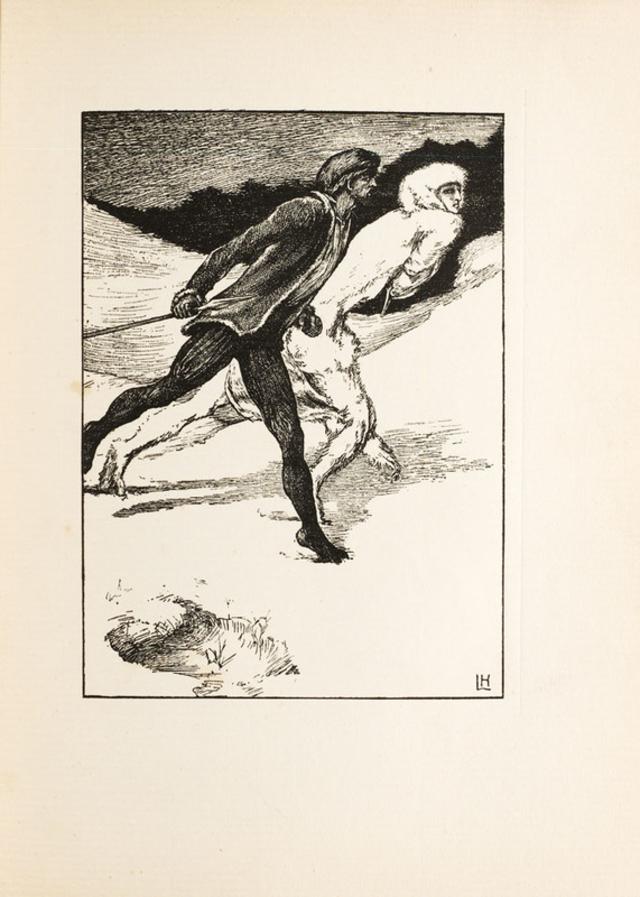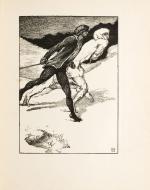Created by Nicole Bernard on Thu, 10/22/2020 - 23:46
Description:
"The Race" is the fourth illustration in the 1896 version of The Were-Wolf, written by Clemence Housman and published by The Bodley Head. It is a wood engraving from a pen and ink drawing of Laurence Housman. "The Race" depicts the pursuit of White Fell through the woods by Christian as midnight approaches. Christian believes her to be a were-wolf and wants to kill her in her wolf form before she kills her next planned victim, Sweyn.
The illustration uses light and shadow to juxtapose the feminine and the masculine. White has commonly been associated with the feminine, purity, and virginity. White Fell disarms everyone in the community (except Christian) by donning the guise of a beautiful woman. White Fell's feminine form dispels suspicion of her true nature and violent potential. This underestimation of women has been prominent in the modern age despite the fact that women are capable. White Fell demonstrates this through her strength and ability to hunt, traits commonly ascribed to men. This duplicity raises the question of which aspect of White Fell is her true nature attesting to the power and danger of womanhood. White Fell claims to be unafraid of men or beasts, but that incites excessive violence in her rather than a plane of equality. It is this severe fanaticism that motivates Christian to kill her. It is also significant that White Fell's gaze falls upon the reader increasing the viewer's shame in their responsibility for creating a world unjust towards women.
Christian is the double of White Fell. All throughout Housman's illustrations, Christian has been depicted in shadows and with unnatural limbs. His form subverts traditional masculine forms in that running (often associated with cowardice) is his predominant skill. He is not attractive and does not have the social sway of his older brother. Additionally, his intense gaze and relentless pursuit of White Fell connote the challenges women face in rejecting nonconsensual male advances. White Fell and Christian both challenge gender conventions revealing the flaws in these constructs.
Copyright:
Associated Place(s)
Timeline of Events Associated with "The Race" from The Were-Wolf
Part of Group:
Featured in Exhibit:
Artist:
- Laurence Housman. Engraved by Clemence Housman.


